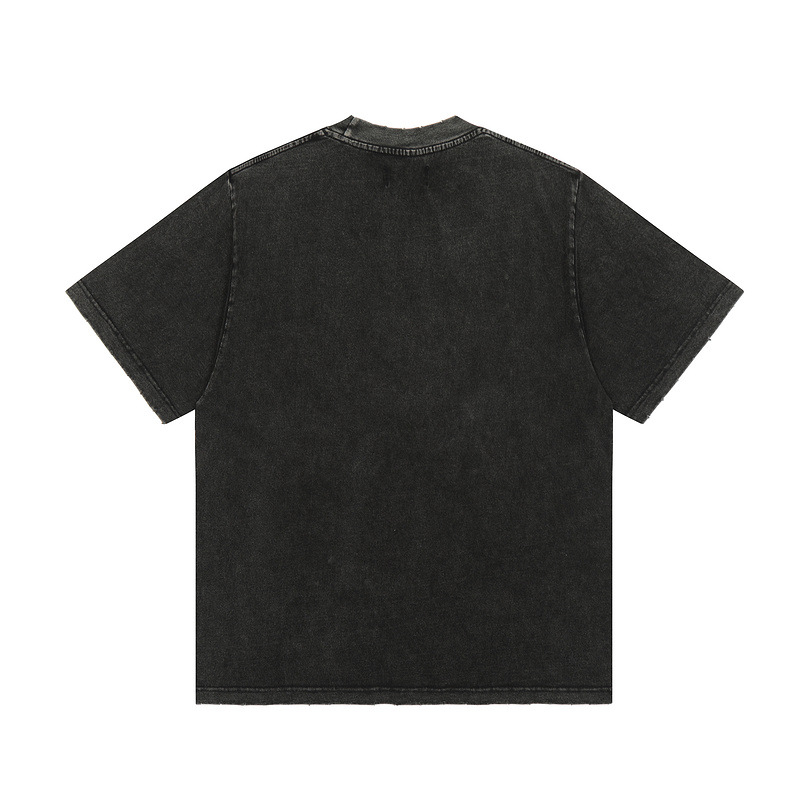T-shirts, once considered the most basic form of casual wear, have transcended their humble beginnings to become a fashion staple across the globe Represent Their versatility, comfort, and adaptability have made them an essential piece in everyone’s wardrobe, from the simplest streetwear outfits to the high-fashion runways. The evolution of the T-shirt in the fashion world reflects not just changes in style but also societal shifts Represent T Shirt cultural movements, and even technological advancements in fabric and printing. In this article, we explore how T-shirts represent more than just clothing; they represent a canvas for self-expression, a symbol of unity, and a bridge between various fashion trends.
The Historical Journey of the T-Shirt
Originally a simple undergarment worn by laborers in the 19th century, T-shirts began their rise to prominence in the early 20th century when they were adopted by the U.S. Navy as part of the standard-issue uniform Represent Clothing Over time, they gained widespread appeal due to their comfort and practicality, particularly during World War II when soldiers and sailors wore them both in training and in battle. However, it wasn’t until the mid-20th century that T-shirts made their leap from functional wear to a mainstream fashion item.
The 1950s saw T-shirts become associated with youth rebellion, thanks to icons like James Dean and Marlon Brando RepresentHoodie who popularized them in films like *Rebel Without a Cause* and *A Streetcar Named Desire*. These actors transformed the perception of the T-shirt, shifting it from an undergarment to a symbol of defiance and coolness. By the 1960s and 70s, the T-shirt evolved further, becoming a canvas for political statements, band logos, and artistic designs. People began using T-shirts to express personal beliefs, promote causes, or show allegiance to cultural movements, from peace symbols during the Vietnam War protests to rock band merchandise during the rise of counterculture.
T-Shirts as a Canvas for Self-Expression
One of the most remarkable aspects of the T-shirt is its ability to serve as a blank slate for creativity. Graphic tees, in particular Represent Sweatshirt have allowed wearers to make personal or political statements, showcase their favorite brands or bands, or display unique artistic designs. This adaptability has kept T-shirts in vogue across generations, as each era finds new ways to repurpose the basic tee into something that reflects the current zeitgeist.
In the 1980s and 90s, the rise of streetwear culture cemented the T-shirt’s status as a must-have fashion item. Skaters, hip-hop artists, and punk musicians all embraced T-shirts as an essential part of their style. Brands like Supreme, Stüssy, and Obey capitalized on this trend, producing limited-edition graphic tees that quickly became coveted pieces. This connection between the T-shirt and streetwear culture created an entirely new fashion category Represent sweatpant where casual, comfortable clothing became as valuable and desirable as high-end designer pieces.
Moreover, T-shirts have played a crucial role in the rise of brand identity and loyalty. Many fashion brands, both high-end and affordable, use T-shirts to market themselves, often placing their logos prominently on the chest. From the iconic polo shirts of Ralph Lauren to the bold logo tees of Gucci and Balenciaga, T-shirts offer a relatively affordable way for consumers to buy into luxury fashion, blurring the lines between high fashion and everyday wear.
The Eco-Friendly Movement and the T-Shirt Industry
As sustainability becomes a growing concern in the fashion industry, T-shirts have not been left out of the conversation Represent Shorts The production of cotton, one of the most common materials for T-shirts, has raised environmental concerns due to the amount of water and pesticides required for cultivation. This has led to a rise in organic cotton T-shirts and the use of recycled or upcycled materials.
Brands such as Patagonia and Everlane have championed sustainable practices by producing eco-friendly T-shirts and promoting transparency in their supply chains. Additionally, the trend of upcycling old T-shirts into new garments has gained traction, encouraging consumers to rethink the lifespan of their clothing and reduce waste Represent HAT This shift toward sustainability reflects a broader change in consumer values, where people are becoming more conscious of the environmental impact of their fashion choices.
T-Shirts and High Fashion The Ultimate Crossover
In recent years, T-shirts have made their way onto high-fashion runways, further solidifying their place in the fashion hierarchy. Designers like Virgil Abloh, with his brand Off-White, have redefined how T-shirts fit into luxury fashion. Abloh’s designs often blur the lines between streetwear and couture, elevating simple pieces like T-shirts with bold graphics, deconstructed details, and high-quality materials. This fusion of streetwear and high fashion has been embraced by other designers and fashion houses, turning the once-humble T-shirt into a luxury item.
From Balmain to Louis Vuitton, luxury brands now regularly feature T-shirts in their collections, often pairing them with tailored blazers, high-end sneakers, and avant-garde accessories. This juxtaposition of casual and formal wear highlights the versatility of the T-shirt and its ability to adapt to various styles and settings.
Conclusion The Timelessness of the T-Shirt
The T-shirt’s journey from a basic undergarment to a global fashion icon is a testament to its enduring appeal. Whether it’s a plain white tee, a graphic design, or a luxury branded piece, the T-shirt remains one of the most versatile and timeless items in fashion. Its ability to evolve with cultural trends, while maintaining its core identity as a comfortable and practical garment, ensures that it will continue to be a fashion staple for years to come.
In a world where fashion is constantly changing, the T-shirt stands as a symbol of adaptability and individuality, allowing each wearer to make it their own. Whether you’re dressing it up or down, wearing it to make a statement, or simply enjoying its comfort, the T-shirt will always represent a unique intersection of style, culture, and self-expression.

